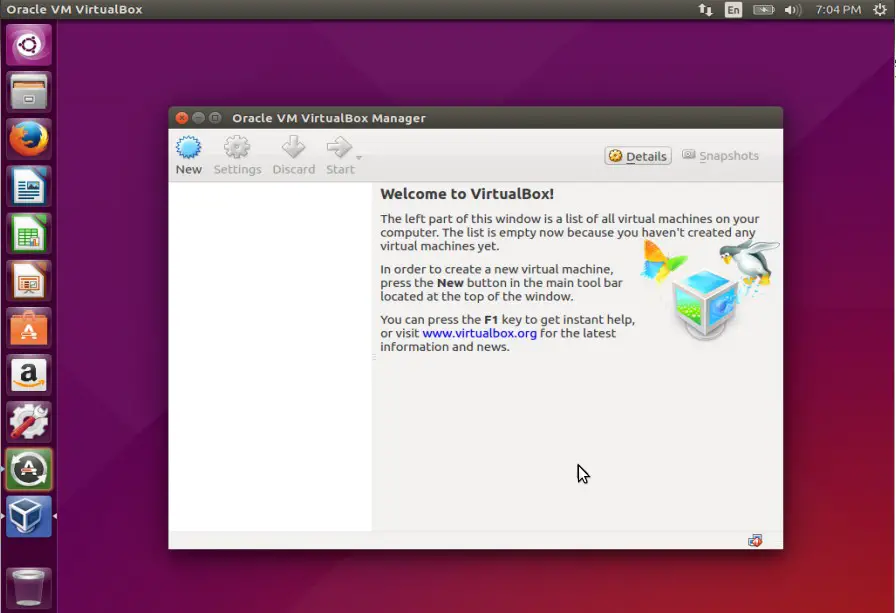
- #UBUNTU VIRTUALBOX 64 BIT INSTALL#
- #UBUNTU VIRTUALBOX 64 BIT UPDATE#
- #UBUNTU VIRTUALBOX 64 BIT UPGRADE#
- #UBUNTU VIRTUALBOX 64 BIT CODE#
Some of you might want to create and use virtual machines graphically. Refer the virtualbox official guide to start creating and managing virtual machines in command line.
#UBUNTU VIRTUALBOX 64 BIT INSTALL#
Install Extension pack using command: $ sudo VBoxManage extpack install Oracle_VM_VirtualBox_Extension_Pack-5.2.30.vbox-extpackĬongratulations! We have successfully installed Oracle VirtualBox with extension pack in Ubuntu 18.04 LTS server.
#UBUNTU VIRTUALBOX 64 BIT UPDATE#
Next, update the software sources using command: $ sudo apt updateįinally, install latest Oracle VirtualBox latest version using command: $ sudo apt install virtualbox-5.2 Adding users to VirtualBox group Then, run the following command to add the Oracle public key: $ wget -q -O- | sudo apt-key add -įor VirtualBox older versions, add the following key: $ wget -q -O- | sudo apt-key add.
#UBUNTU VIRTUALBOX 64 BIT CODE#
Replace the word 'bionic' with your Ubuntu distribution's code name, such as 'xenial', 'vivid', 'utopic', 'trusty', 'raring', 'quantal', 'precise', 'lucid', 'jessie', 'wheezy', or 'squeeze '. deb bionic contribĪdd Oracle VirtualBox official repository

Here, I will be using Ubuntu 18.04.2 LTS, so I have added the following repository. To do so, edit /etc/apt/sources.list file: $ sudo nano /etc/apt/sources.list $ sudo reboot Install Oracle VirtualBox on Ubuntu 18.04 LTS serverĪdd Oracle VirtualBox official repository. Next, install the following necessary packages: $ sudo apt install build-essential dkms unzip wgetĪfter installing all updates and necessary prerequisites, restart the Ubuntu server.

#UBUNTU VIRTUALBOX 64 BIT UPGRADE#
$ sudo apt update $ sudo apt upgrade $ sudo apt dist-upgrade

$ sudo add-apt-repository universe $ sudo add-apt-repository multiverseĪnd then, update the Ubuntu server by running the following commands one by one. These repositories are required to install some dependencies while installing Virtualbox.


 0 kommentar(er)
0 kommentar(er)
